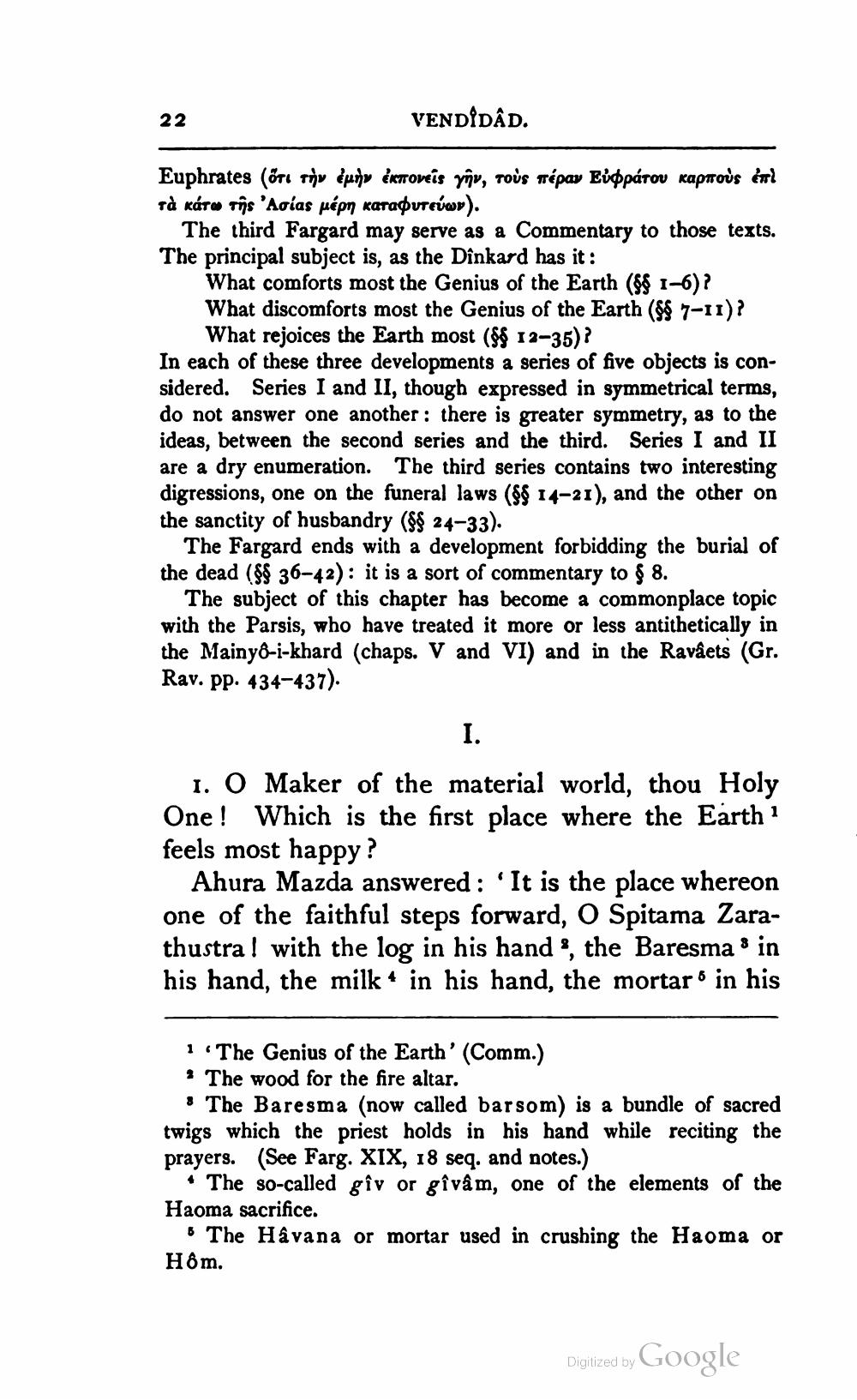________________
22
VENDIDÂD.
Euphrates (öre griv dueshv deroveis yñv, rous mépar Eimpátou kapnous diri τα κάτω της Ασίας μέρη καταφυτεύων).
The third Fargard may serve as a Commentary to those texts. The principal subject is, as the Dînkard has it:
What comforts most the Genius of the Earth ($$ 1-6)? What discomforts most the Genius of the Earth (&$ 7-11)?
What rejoices the Earth most (&$ 12-35)? In each of these three developments a series of five objects is considered. Series I and II, though expressed in symmetrical terms, do not answer one another : there is greater symmetry, as to the ideas, between the second series and the third. Series I and II are a dry enumeration. The third series contains two interesting digressions, one on the funeral laws ($$ 14-21), and the other on the sanctity of husbandry ($$ 24-33).
The Fargard ends with a development forbidding the burial of the dead (&$ 36-42): it is a sort of commentary to $ 8.
The subject of this chapter has become a commonplace topic with the Parsis, who have treated it more or less antithetically in the Mainy&-i-khard (chaps. V and VI) and in the Ravâets (Gr. Rav. pp. 434-437).
1. O Maker of the material world, thou Holy One! Which is the first place where the Earth feels most happy?
Ahura Mazda answered: 'It is the place whereon one of the faithful steps forward, O Spitama Zarathustra ! with the log in his hand, the Baresma & in his hand, the milk + in his hand, the mortaro in his
1 The Genius of the Earth' (Comm.) · The wood for the fire altar.
• The Baresma (now called barsom) is a bundle of sacred twigs which the priest holds in his hand while reciting the prayers. (See Farg. XIX, 18 seq. and notes.)
The so-called gîv or gîvâm, one of the elements of the Haoma sacrifice.
o The Havana or mortar used in crushing the Haoma or Hôm.
Digitized by Google




